AEgIS Experiment Breakthrough: Laser Cooling Opens Door to New Antimatter Studies
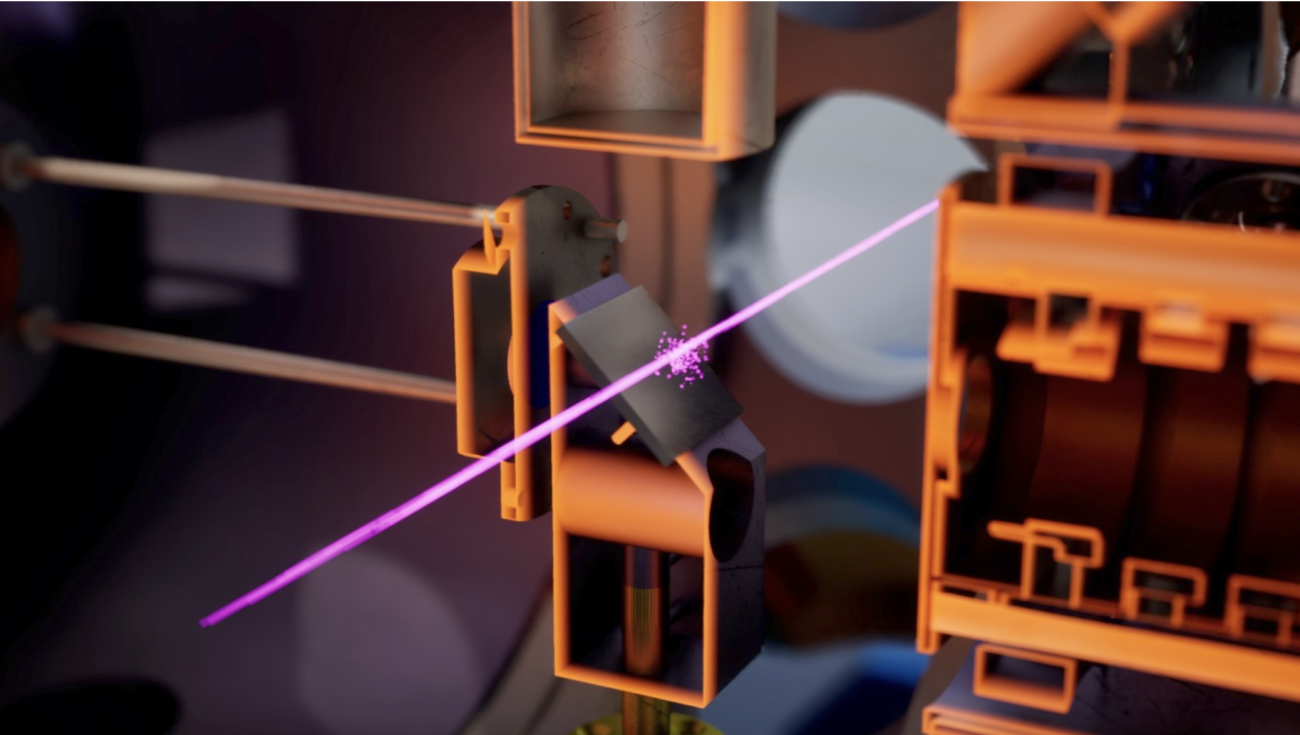
A significant breakthrough has been achieved at CERN by the AEgIS experiment. Researchers successfully cooled a sample of positronium using a laser, paving the way for a new era in antimatter research. This accomplishment, reported in Physical Review Letters, holds promise not only for the AEgIS experiment's core goal of testing the equivalence principle with antimatter, but also opens doors to a multitude of exciting possibilities in studying this enigmatic counterpart to normal matter.
Following 30 years of effort by the community, this result is an important milestone in the field of antimatter physics, as the availability of cold samples of positronium atoms paves the way for new exciting experiments and technological breakthroughs. The AEgIS experiment seeks to answer a fundamental question: does antimatter, essentially the mirror image of regular matter, experience gravity in the same way? The difficulty of creating and studying antimatter has kept this question unanswered for decades.
The team's recent feat involved using a broadband laser to cool a significant portion of a positronium sample. Positronium, an exotic atom, consists of an electron and its antimatter partner, a positron. Cooling these atoms allows for more precise measurements and manipulation, critical for the success of the experiment.
The technique used at AEgIS to cool positronium is called Doppler cooling. It is based on the momentum transfer between atoms and light and the Doppler effect. Most people are familiar with the Doppler effect in sound waves, where the perceived frequency (or wavelength) depends on the relative motion between the observer and the source. This phenomenon is not exclusive to sound waves but applies to electromagnetic waves in all frequency domains, including UV, visible, and infrared light.
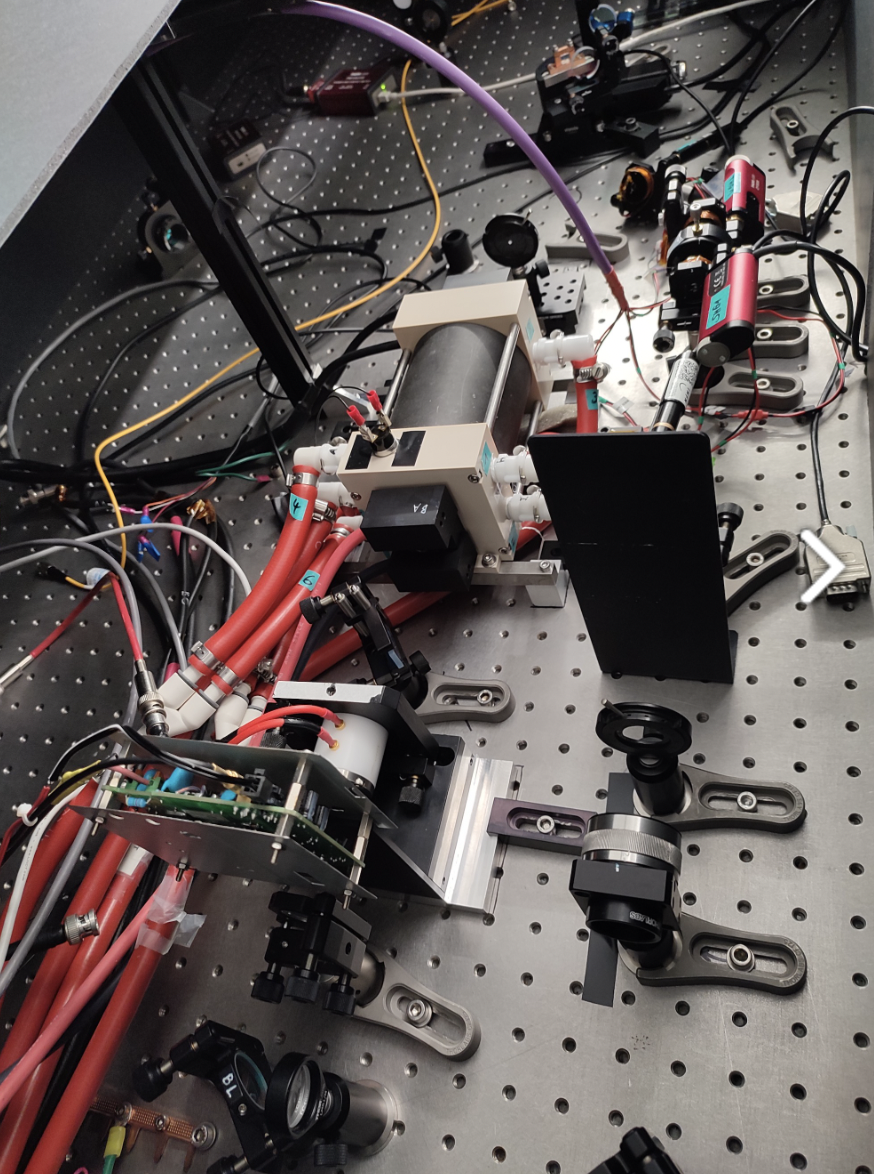
The alexandrite-based Q-switched pulsed laser we developed in collaboration with Louis Cabaret (Berilialaser) to fulfil the needs of Ps laser cooling. The laser cavity uses a Volume Bragg Grating as a dispersive element to realize its broad band pulse. Two series of non-linear crystals triple the fundamental to produce the required 243 nm light. Photo credits: Lisa Glöggler
The approach taken by AEgIS is to irradiate a sample of positronium atoms immediately after they are produced with a broadband laser featuring a pulse length in the order of positronium’s lifetime. A broadband laser emits light across a large range of frequencies. This technique offers distinct advantages over previous methods. The broadband laser cools a larger portion of the sample, while the absence of external electric and magnetic fields simplifies the setup and extends the lifetime of the positronium.
The collaboration successfully reduced the temperature of the sample by more than half, from 380 Kelvin to 170 Kelvin, and aims to push this further below 10 Kelvin in future experiments.
The implications of this success extend far beyond the AEgIS experiment itself. Researchers believe it could revolutionize antimatter studies. By cooling antimatter, scientists can manipulate and study it with greater precision, potentially leading to groundbreaking discoveries about its properties.
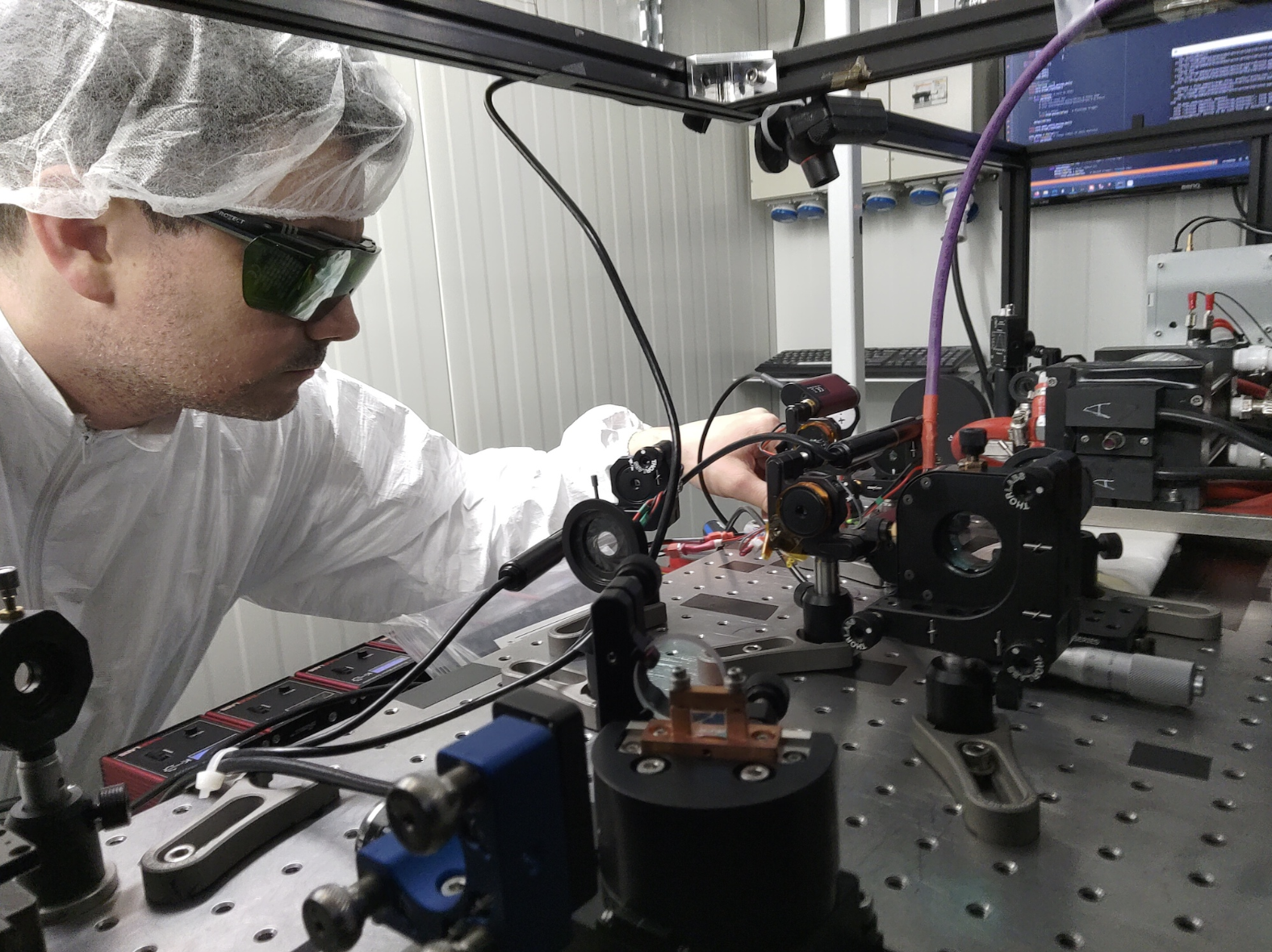
Antoine Camper, one of the lead authors of this study, is aligning one of the non-linear crystals used to double the fundamental wavelength of the alexandrite laser cavity. Special dressing is required to avoid dust to fall on the optical table, as well as protective goggles due to the high peak power of this laser. Photo credits: Antoine Camper.
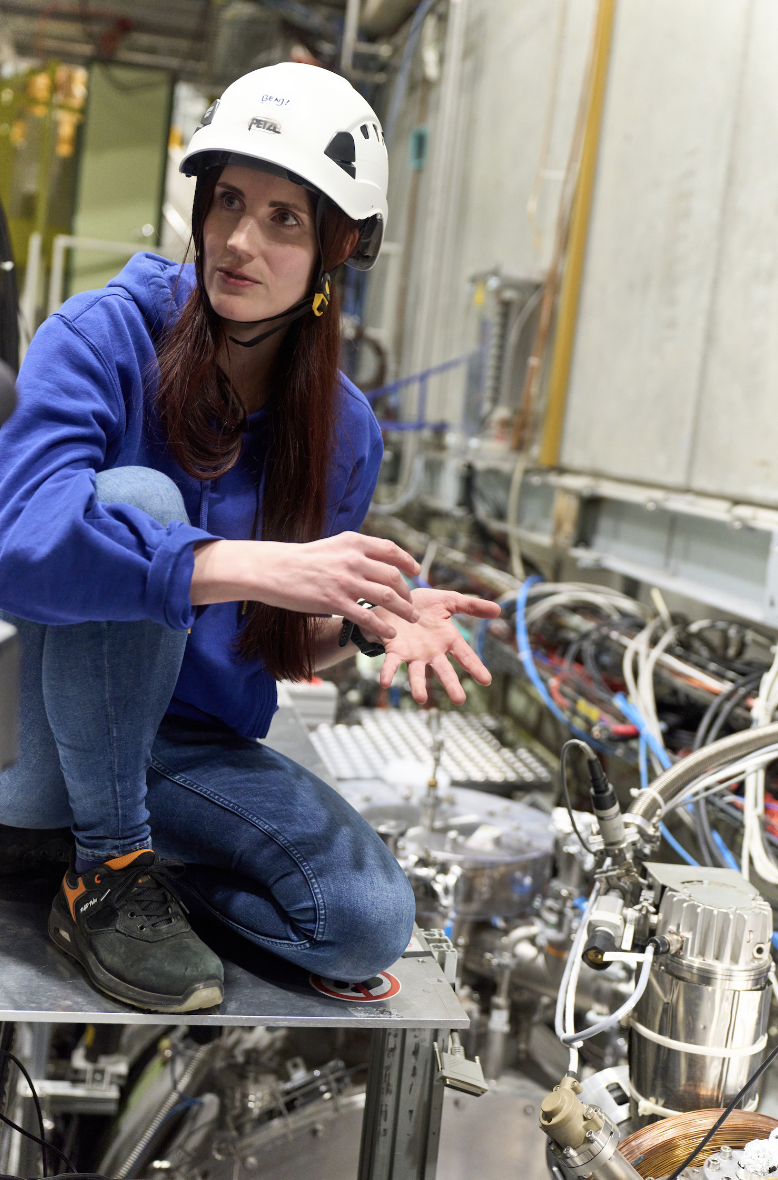
Lisa Glöggler, the first author of this study, standing by the positronium AEgIS apparatus at CERN. Copyright 2024 CERN.
Furthermore, this achievement could pave the way for the development of a gamma-ray laser. This theoretical laser, utilizing the properties of cooled positrons, could offer unprecedented insights into the atomic nucleus, with applications beyond fundamental physics research.
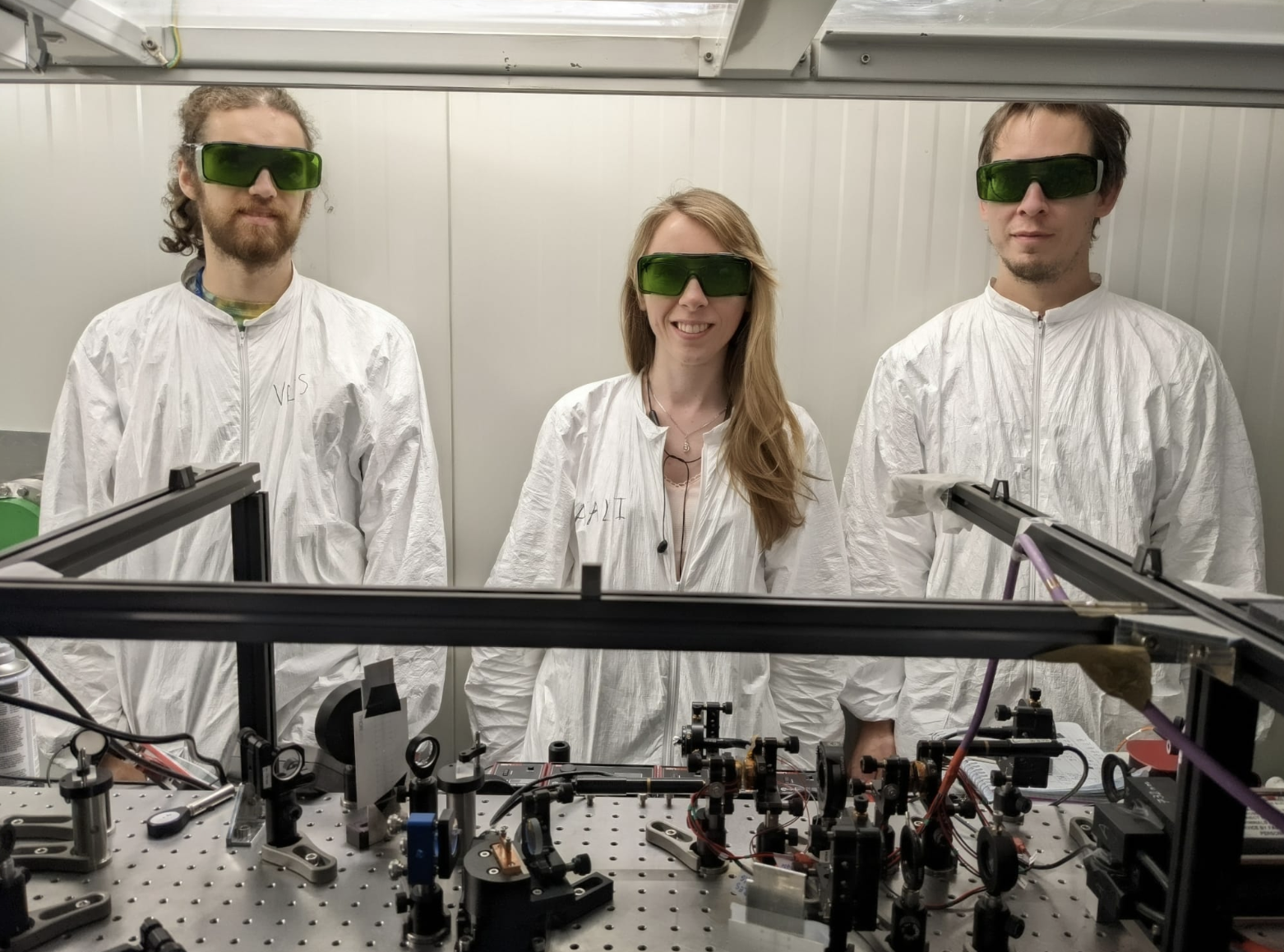
From right to left, Benjamin Rienäcker, Natali Gusakova and Valts Krumins, three of the main authors of this study, standing by the alexandrite-based Q-switched pulsed laser used to cool positronium. Photo credits: Antoine Camper.
"The implications of this achievement extend beyond the technical success of laser cooling positronium," said Dr. Benjamin Rienäcker, the newly elected AEgIS Physics Coordinator and a member of the QUASAR Group at CERN. "It paves the way for more accurate measurements, crucial for advancing our understanding of antimatter and its role in the universe. I expect this breakthrough to enable new experiments, offering fresh insights into the cosmic matter-antimatter imbalance and the fundamental building blocks of the universe."
The successful laser cooling of positronium significantly enhances the AEgIS experiment's ability to form antihydrogen and opens doors for entirely new avenues in precision experiments. These include tests of Quantum Electrodynamics and the Equivalence Principle using positronium, formation of positronium beams, and exploration of Bose-Einstein condensates (BECs).
The creation of a BEC of positronium would be a major breakthrough, allowing scientists to study its properties in an entirely new way and potentially leading to the development of new technologies, such as coherent gamma-ray lasers. Existing techniques for creating BECs in other atoms and molecules, which typically involve laser cooling and trapping, could be adapted for this purpose.
The AEgIS experiment involves physicists from several countries in Europe and beyond. Professor Carsten P Welsch, who leads the Cockcroft Institute's contribution to the AEgIS experiment, added: "By exploring the properties and behaviour of exotic atoms like positronium, we are advancing our knowledge of fundamental physics at the same time as opening doors to technological innovations with potentially much wider applications. This fantastic result is a testament to the excellent teamwork and collaboration within AEgIS."
AEgIS experiment's latest achievement underscores the ongoing progress in antimatter research. The successful laser cooling of positronium opens exciting new avenues for scientists to explore the mysteries of antimatter and its interaction with the universe.
Read more:
